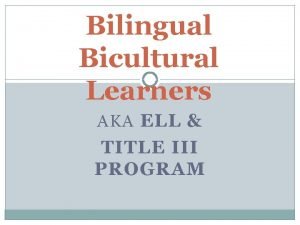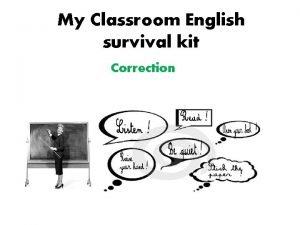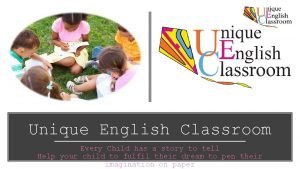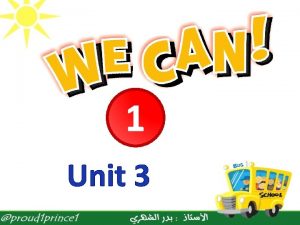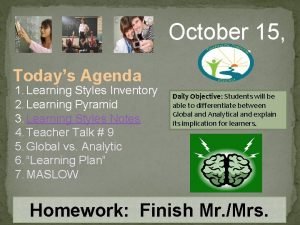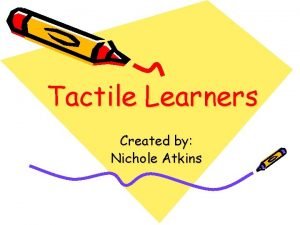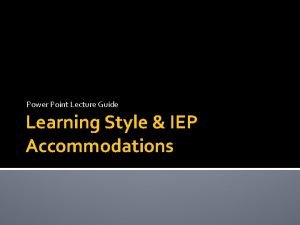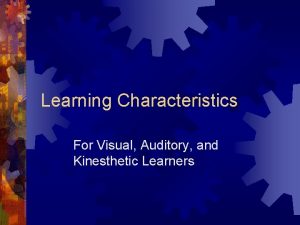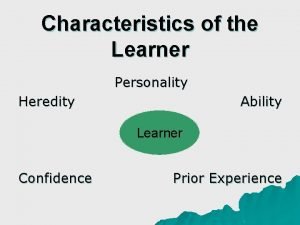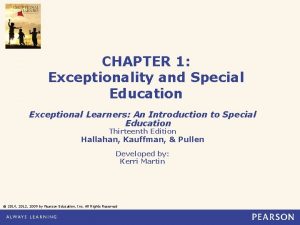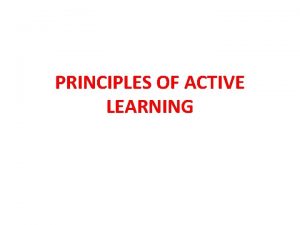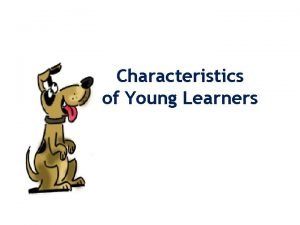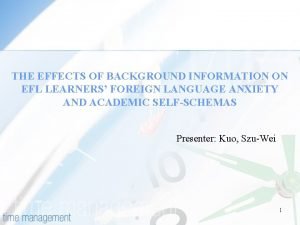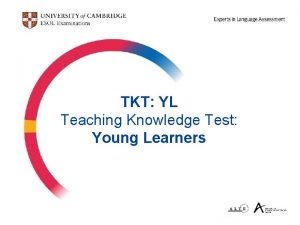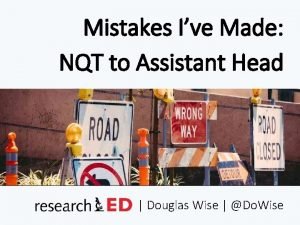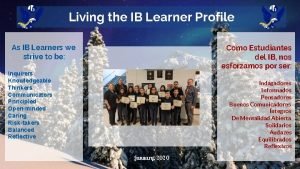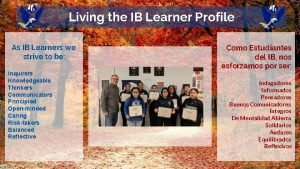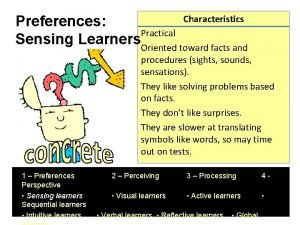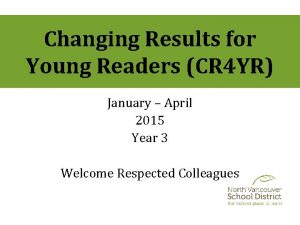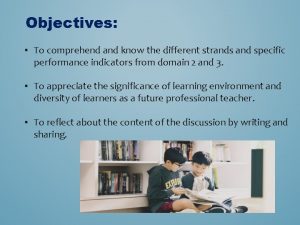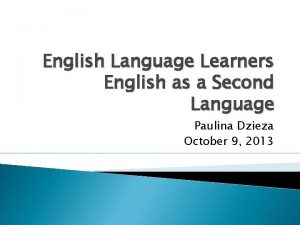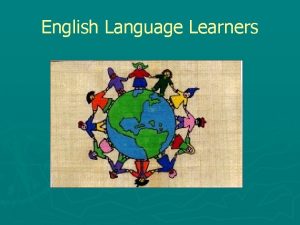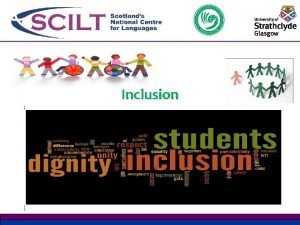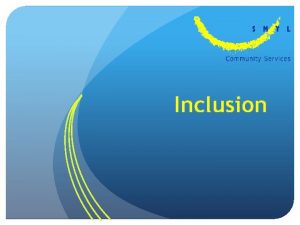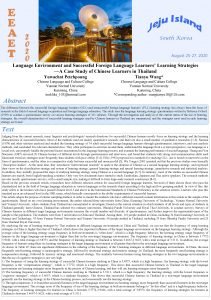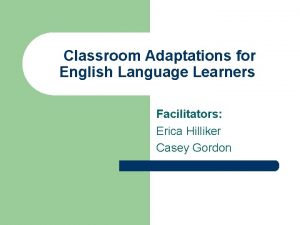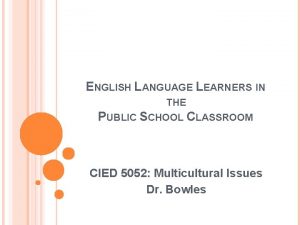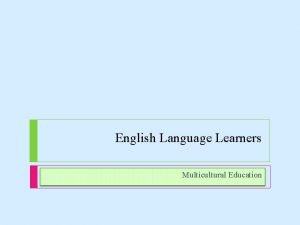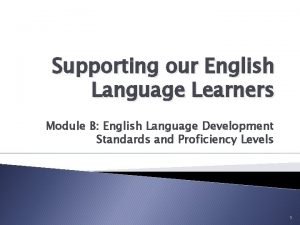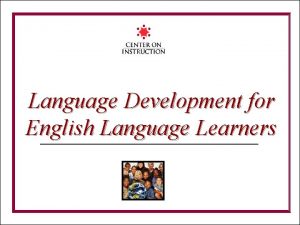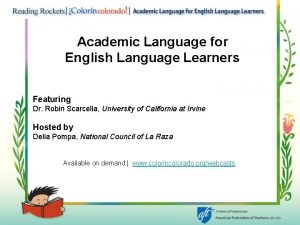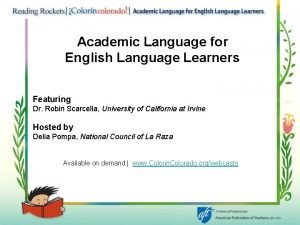English Language Learners in the Classroom Successful Inclusion









































- Slides: 41

English Language Learners in the Classroom “Successful Inclusion: A Shared Responsibility”

Including English Language Learners (ELLs) in the Classroom • Inclusion Ideas for ELL Students That Work

PDE’s Commitment to Least Restrictive Environment (LRE) “Our goal for each child is to ensure any type child study team begins with the general education setting with the use of Supplementary Aids and Services before considering a more restrictive environment. ”

PDE Vision for the Education of English Language Learners Provide for the maintenance and support of a thorough and efficient system of education which includes the provision of quality, culturally-responsive and equitable educational programs for English Language Learners and assurance of their appropriate participation in all aspects of the educational program. The Department ensures that its programs will address the needs and rights of English Language Learners in all its initiatives throughout the entire process of planning and implementation.

PDE Vision for the Education of English Language Learners • The vision of the Department promotes the recognition of these students and their parents as cultural, economic, and linguistic assets to the Commonwealth’s global initiatives. • The Department is committed to using its Standards Aligned System to ensure that English Language Learners receive core curriculum instruction and achieve high levels of academic success.

A Defined Need for Commitment and Vision by All School Districts • Language and educational policies for children new to English in the United States continue almost spontaneously. This appears to be influenced by immediate social, political, and economic factors. Data obtained from the 2000 Census have revealed that the number of children between the ages of 5 and 17 who speak a language other than English has increased by over 54% from the previous 1990 Census.

So… why should a school district have a policy in place specifically for its English Language Learners? • School districts must implement policies for equal access of students for whom English is a second or new language. Those policies are set at the level by the local school board, but they may never supersede federal or state law.

Implications for Rural Schools • Fact: Most schools in rural communities enroll very few students for whom English is a second or new language. Sometimes, interventions in small schools are dealt with as they occur without formal procedures.

You…. . are a necessary and an important part of this educational achievement process. You…. . can make a difference because you are there and because You…… understand will help them understand.

• Recognize and understand the implications from the stages of second language acquisition. • Identify and use tools for assisting ESL students in their planned instruction. • Summarize current research and relate it to effective instruction for ELLs. • Apply effective instructional accommodations.

Let’s Begin With English Language Acquistion • Children who enter our schools with a language other than English have a good knowledge of their native language (L 1) … a “linguistic knowing” that they use unconsciously in their daily communications. • The student’s L 1 serves as the foundation for English language acquisition.

English Language Development for ESL Students Effective L 2 language instruction requires an understanding of and is guided by a knowledge base on: • Second Language Acquisition • Conventions of L 1 and L 2 • Key components in language development

Second Language Acquisition • Second language acquisition is a lifelong process with many parallels to first language acquisition. • Error patterns are predictable across all learning regardless of the student’s L 1 or formal instruction in L 2. • Language acquisition is not a linear process; formal instruction does not speed up the process. • Sequential curricula materials (mastery of each discrete point before moving on to the next point) can be disastrous for second language learners.

Stages of Second Language Development • Pre-Production; Silent Period • Early Production • Speech Emergence • Intermediate Fluency

What this means for the English Language Learner • The sounds in L 1 that transfer to L 2 will be sounds in L 2 that are not part of the phonology of L 1. • In addition, the letter / sound correspondence may not be the same. LEER MAS 15

Literacy Development in English for ESL students w It is important to understand that ESL students are faced with many phonological, syntactical, and semantic differences in going from L 1 to L 2. w It is also important to understand that the less proficient a student is in English, the more the student will rely on L 1 cues.

Think about this: Second Language Learners… Second language learners are doing twice the “thinking” work of native speakers during reading instruction because they are: w acquiring new literacy concepts and skills and w attending to the sounds, meanings, and structures of a new language.

Some Simple Guidelines for Helping Second Language Learners Have high expectations for learning. u Promote the development of essential language and literacy skills at a student’s level of oral proficiency in English. u Encourage and provide support for literacy through activities that build on language, comprehension, print concepts, and the alphabetic principle. u Use language that is comprehensible and meaningful to the students u

Additional Guidelines for Teaching Second Language Learners § Provide opportunities for students to engage in extended dialogues. § Help assess students’ progress frequently.

Guidelines for Teaching English Language Learners u Integrate ESL strategies in content area instruction. u Activate background knowledge and connect content to students’ lives. u Use graphic organizers, charts, and other visuals to enhance comprehension.

Feedback from ELL students Increasing comprehensibility • Please use easier words. • Explain important words with smaller words. Please speak slowly and clearly. • Please write more clearly on the board. • Don't give difficult words in test questions. Repeat what other students say when they say question or give an answer. • Let us explain things in our own language to people who don't understand something.

Feedback from ELL students Providing appropriate extra assistance • Please wait after the lesson to explain. • Give me more time to do my work. • Give me more time to write down things from the board. • Don't give me paper without explaining what to do. • Explain the homework please. • When we have a chance to answer a question, make the other students quiet, because it takes a time to transfer thoughts in words. • Come to ESL students during quiet working to ask how they understood. • Can I speak my first language in lesson?

Feedback from ELL students Reducing embarrassment • Stand near me when I must answer question. • Punish the students who make fun of our poor English. • Don't pick me in lesson because I can't answer. • Even if I answer wrong, don't laugh. • I hate when my teacher tells me the meaning of easy words. • I don't like it when my teacher hand out the papers or tests because the teacher says "not good" or "good" with loud voice, so all the students can hear it.

Feedback from ELL students Being aware that jokes exclude ELL students • Jokes are difficult to me. • You should not make a joke about everything. A final plea Please be nice to us!

Guidelines for Teaching English Language Learners u Provide opportunities for discussions of texts. u Recognize and value the different discourse (speaking) patterns across cultures.

ELL Support • Content area teachers are vital to student achievement, and it is imperative that the duties they perform help to meet those ends. • Let’s discuss the following lists together and think about the most effective ways to utilize time and skills:

So What Can You Actually Do to Support? Instructional Duties: Small group instruction. Individual instruction. Assist students with independent work. Read aloud and listen to students read. Assist with writing and reading. Support ESL students when working on content area instruction. • Assist with relevant record keeping. • • •

So What Can You Actually Do to Support? Instructional Duties: • Escort younger or newer children between classrooms. • Organize educational materials and gather information to support the ESL teacher. • Assist in scheduling. • Help to monitor students during field trips or assemblies.

Making it Simple • Provide academic support to all students in content areas (such as Science, Mathematics, and Social Studies. )

What other kinds of support may these students need? • In addition to academic support, students who are new to the school and new to this country may not understand many of the complicated systems we have in our high schools. • Offer these students the support they need to help them get through school.

What Tools Do We Have? ELP Standards Language Functions and Forms ACCESS for ELLs released items Speaking and Writing Rubrics Materials and Resources – Examples of Sensory, Graphic, and Interactive Supports • Assessment information • • • http: //www. wida. us/standards/CAN_DOs/index. aspx

What is the best way to keep in contact with the ESL teacher? • How the liaison takes place is a matter for each paraprofessional to determine in consultation with the ESL teacher. Some prefer to have a brief regular meeting to discuss work in progress and students of concern; while other find it easier to keep in contact as the need arises.

FAQ Should I correct an ESL student’s grammar mistakes? • Generally not. Students who answer questions in class are working hard to show what they know or have understood and so they are usually not receptive to any feedback on the grammatical accuracy of their message.

FAQ Should I correct an ESL student’s pronunciation mistakes? • Students are usually even more sensitive about their pronunciation than their grammar, so be very careful how you deal with such problems. • It is very important that you do not allow other students to mock ESL students for their pronunciation or imitate their accents.

FAQ Should I correct an ESL student’s spelling mistakes? • As with grammar, it may on occasion be appropriate to draw attention to spelling mistakes. It is reasonable to expect students to spell correctly the keywords in an assignment.

FAQ Should I let ESL students talk in their native language in the classroom or in my group? • It depends what they’re talking about! • In general, it is worth noting how important it is for students to be able to discuss their work in their own language.

FAQ Should I encourage ESL students to use their dictionaries ? • Within reason. There are times in lessons when it is essential that a student understands a word in order that what comes next makes sense. • In general, however, students should be discouraged from looking up too many words in class, for two main reasons.

FAQ How can I help my ESL students learn English as well as other subjects? • The most important advice is: Make it comprehensible! When you do this, the ELL students will not only learn other subjects but English as well.

Helping ELL’s Understand Becoming efficient listeners: • ELL’s spend much more time listening than they do speaking, reading or writing • Listening is the basis for most classroom activities • Listening is an active skill • Pre-teaching key words—flash cards, using in a sentence, conversation. . . • Repetition • Clearly enunciate • Visual materials to help with comprehension • Increasing wait time • Make the student feel personally involved • Summaries

What about Response To Intervention (RTI)? RTI is an instructional service delivery model founded on two key premises: • All children can learn when provided with appropriate, effective instruction. • Most academic difficulties can be prevented with early identification of need followed by immediate intervention.

Questions/Comments • Greg Minarchick @ Senior High 342 -1521 ext. 118 – gminarchick@pomounties. org Website: http: //www. pomounties. org/56810092123930/site/default. asp
 Audioize
Audioize English language learners
English language learners Reading strategies for english language learners
Reading strategies for english language learners Equal protection for english language learners
Equal protection for english language learners Teaching young learners english
Teaching young learners english Sourima mal
Sourima mal What was the first successful english colony
What was the first successful english colony What was the first successful english colony in america
What was the first successful english colony in america A level english language language change
A level english language language change My classroom english
My classroom english Unique english classroom
Unique english classroom Classroom english flashcards
Classroom english flashcards Global vs analytical learners
Global vs analytical learners How to teach grammar to young learners
How to teach grammar to young learners Heather nichole atkins
Heather nichole atkins Remedial teaching is a
Remedial teaching is a Global vs analytical learners
Global vs analytical learners Characteristics of kinesthetic learners
Characteristics of kinesthetic learners Eager vs lazy classification
Eager vs lazy classification Kinetic learning
Kinetic learning When is cognitivism beneficial for learners
When is cognitivism beneficial for learners What is global-analytic continuum
What is global-analytic continuum Code of ethics for professional teachers philippines
Code of ethics for professional teachers philippines Inheritance characteristics
Inheritance characteristics Exceptional learners: an introduction to special education
Exceptional learners: an introduction to special education Principles of active learning
Principles of active learning Characteristics of attention
Characteristics of attention 3b using questioning and discussion techniques
3b using questioning and discussion techniques Background information for learners
Background information for learners Quadrant d learners
Quadrant d learners Gifted and talented learners in the philippines
Gifted and talented learners in the philippines Famous people with existential intelligence
Famous people with existential intelligence The learners will be able to
The learners will be able to Tkt young learners
Tkt young learners Graham nuttall the hidden lives of learners
Graham nuttall the hidden lives of learners Ib learners profile
Ib learners profile Ib learners profile
Ib learners profile Global learners characteristics
Global learners characteristics Changing results for young learners
Changing results for young learners Technology for diverse learners
Technology for diverse learners Active and passive learners
Active and passive learners Diversity of learners
Diversity of learners

